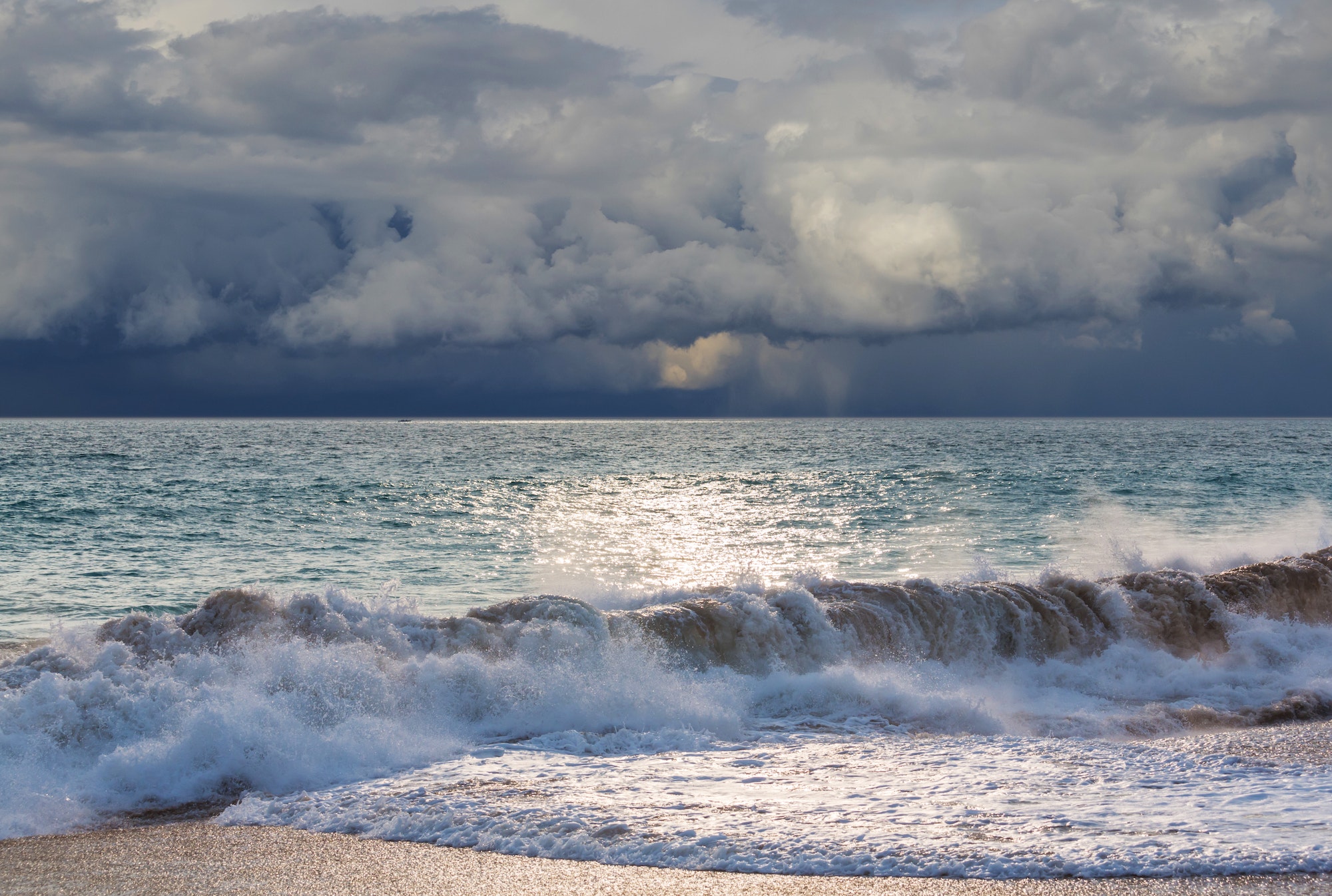“Brace yourself for the fury of Charley – a force to be reckoned with.”
Introduction
Hurricane Charley was a powerful and destructive Category 4 hurricane that struck the United States in August 2004. Its impact was felt in Florida and other states, such as South Carolina, North Carolina, and Virginia. It was the second major hurricane of the 2004 Atlantic hurricane season and caused widespread damage and devastation in Florida, particularly in the central and southwestern regions. With wind speeds reaching 150 mph, Hurricane Charley was one of the strongest hurricanes to hit the United States in recent history. The storm caused billions of dollars in damage and claimed the lives of 15 people.

Preparing for the Worst
Hurricane Charley was a powerful and destructive storm that landed in Florida on August 13, 2004. With wind speeds reaching up to 150 miles per hour, it caused widespread damage and left a lasting impact on the affected communities. As we approach hurricane season, reflecting on the lessons learned from Hurricane Charley and how we can prepare for the worst to stay safe during a storm is essential.
Many residents in the affected areas were caught off guard and unprepared for the storm’s intensity. As a result, they were left vulnerable and had to face the consequences of not having a plan in place. It is crucial to have a disaster preparedness plan in place before a hurricane strikes. This includes having an emergency kit with essential supplies such as non-perishable food, water, flashlights, batteries, and a first aid kit.
Another lesson learned from Hurricane Charley is the importance of staying informed. The storm’s path and intensity can change quickly, and staying updated on the latest developments is essential. This can be done by monitoring local news and weather reports and signing up for emergency alerts from your local government. It is also necessary to have a battery-powered or hand-cranked radio in case of power outages.
In addition to being prepared and staying informed, it is crucial to have an evacuation plan. Hurricane Charley caused widespread damage and destruction, forcing many residents to evacuate their homes. Having a designated evacuation route and following local authorities’ instructions is essential. If you live in a coastal area, planning where to go is necessary in case of a storm surge.
During a hurricane, staying safe and taking necessary precautions is essential. One of the most dangerous aspects of a hurricane is the storm surge, a rise in sea level caused by the storm’s winds and low pressure. It is essential to evacuate if you live in a low-lying area or near the coast. If you cannot evacuate, seek shelter in a sturdy building on higher ground.
In addition to storm surges, hurricanes bring strong winds and heavy rain. It is essential to secure your home and property before the storm hits. This includes boarding up windows, securing loose objects, and trimming trees and shrubs. It is also essential to have a plan for where to take shelter in case of a tornado, which can often occur during a hurricane.
After the storm has passed, it is essential to proceed with caution. Hurricane Charley left behind a trail of destruction, and it took weeks for the affected areas to recover. It is necessary to stay away from downed power lines and flooded areas. If you evacuated, wait for local authorities to give the all-clear before returning home. It is also essential to be mindful of potential hazards, such as debris and contaminated water.
In conclusion, Hurricane Charley serves as a reminder of the importance of being prepared, staying informed, and having an evacuation plan. As we approach hurricane season, it is crucial to take the necessary steps to ensure the safety of ourselves and our loved ones. By learning from the lessons of Hurricane Charley, we can better prepare for the worst and stay safe during a storm.
The Devastation of Hurricane Charley
The storm formed in the Caribbean Sea and quickly gained strength as it moved towards the Gulf of Mexico. Despite meteorologists’ warnings, many Florida residents were caught off guard by the storm’s intensity. Charley landed on August 13, with winds reaching 150 miles per hour. The storm surge and high winds caused massive flooding in coastal areas, destroying homes and businesses.
The destruction caused by Hurricane Charley was widespread, with the hardest-hit areas being Punta Gorda, Port Charlotte, and Fort Myers. The storm ripped through these communities, leaving a path of destruction. Entire neighborhoods were flattened, and many buildings were reduced to rubble. The damage was so severe that it was difficult for rescue teams to reach those in need.
In addition to the physical damage, the storm also caused widespread power outages. Millions of people were left without electricity for days; in some areas, it took weeks for power to be fully restored. This made it even more challenging for rescue and relief efforts to reach those in need. The lack of control also meant many people were without air conditioning in the sweltering Florida heat, making the storm’s aftermath even more unbearable.
The aftermath of Hurricane Charley was a scene of chaos and destruction. The storm had caused an estimated $16 billion in damage, making it one of the costliest hurricanes in US history. The devastation was not limited to just physical structures; the storm also significantly impacted the economy. Many businesses were forced to close, and the tourism industry, a primary source of income for Florida, took a significant hit.
The aftermath of Hurricane Charley also highlighted the importance of disaster preparedness and response. The storm caught many people off guard, and local and state authorities’ lack of preparation and response was heavily criticized. In the years following the storm, there have been significant improvements in disaster preparedness and response in Florida, with better evacuation plans and communication systems in place.
Despite the destruction and devastation caused by Hurricane Charley, the resilience and strength of the affected communities were evident in the aftermath. People came together to help each other, and volunteers from all over the country came to assist with relief efforts. The rebuilding process was long and challenging, but the affected communities slowly began to recover and rebuild.
Rebuilding After Hurricane Charley
Hurricane Charley was classified as a Category 4 hurricane and caused widespread devastation in its path. The communities affected by Hurricane Charley were left reeling in its aftermath, but they showed incredible resilience in the face of such a catastrophic event.
The impact of Hurricane Charley was felt across several counties in Florida, including Charlotte, DeSoto, and Hardee. The storm caused extensive damage to homes, businesses, and infrastructure, leaving thousands without power and access to necessities. The initial response to the disaster focused on search and rescue efforts and providing immediate aid to those affected. However, as the storm passed and the extent of the damage became apparent, the focus shifted to rebuilding and recovery.
One of the most remarkable aspects of the communities affected by Hurricane Charley was their resilience in the face of such devastation. Despite losing their homes, possessions, and, in some cases, loved ones, the people of these communities banded together to support each other and begin the process of rebuilding. This resilience was evident in the storm’s immediate aftermath, as neighbors helped each other clear debris and find shelter. It was also apparent in the following months and years as these communities worked tirelessly to rebuild and recover.
The rebuilding process after Hurricane Charley was a long and arduous one. Many homes and businesses were utterly destroyed, and the infrastructure of the affected areas was severely damaged. However, with the help of government aid and the support of volunteers and charitable organizations, the communities affected by Hurricane Charley were able to slowly but surely rebuild. This process was challenging, as many faced financial difficulties and emotional trauma. However, the resilience of these communities was unwavering, and they persevered through the difficult times.
One of the critical factors that contributed to the successful rebuilding of these communities was the strong sense of community spirit. In the face of such a disaster, people came together to support each other and work towards a common goal. This sense of unity and togetherness was crucial in overcoming the challenges of rebuilding after Hurricane Charley. It also helped foster a sense of hope and optimism for the future, as people saw progress and were inspired to continue working towards a better tomorrow.
Another critical aspect of the rebuilding process was the implementation of stricter building codes and regulations. After the devastation caused by Hurricane Charley, it became clear that more robust and more resilient structures were needed to withstand future storms. As a result, building codes were updated and enforced, ensuring that homes and businesses were better equipped to withstand the forces of nature. This helped protect the communities from future disasters and gave residents a sense of security and peace of mind.
In conclusion, the communities affected by Hurricane Charley showed incredible resilience in the face of one of the most destructive storms in recent history. Through their determination, unity, and perseverance, they rebuilt and recovered from the devastation caused by the hurricane. The lessons learned from this experience have also helped to strengthen these communities and prepare them for any future challenges that may come their way. Hurricane Charley may have caused immense destruction, but it also brought out the best in these communities, showcasing the proper strength and resilience of the human spirit.
Conclusion
Hurricane Charley was a powerful and destructive storm that caused significant damage and loss of life in the United States in 2004. With wind speeds reaching up to 150 mph, it left a trail of destruction in its path, particularly in Florida, where it made landfall. The hurricane serves as a reminder of the devastating impact of natural disasters and the importance of being prepared and taking necessary precautions. It also highlights the need for continued research and technological advancements to predict better and mitigate the effects of such storms in the future.











